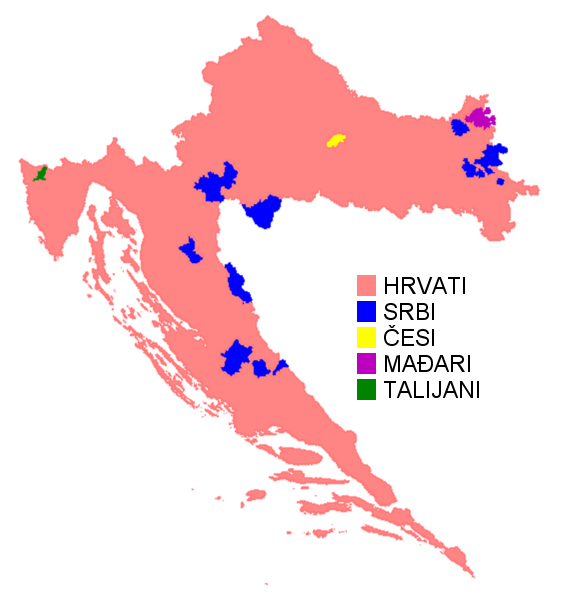Demographics of Croatia, Data of FAO, year 2005 ; Number of inhabitants in thousands.
Croatia's 2001 census recorded a total population of 4,437,460. This is estimated to have risen to 4,489,409 by 2009.
Croatia is inhabited mostly by Croats (89.6%), while minority groups include Serbs (4.5%), Bosniaks, Hungarians, Italians, Slovenes, Germans, Czechs, Romani people and others (5.9%). For most of the 20th century, the population of Croatia has been rising from 3,430,270 in 1931 to 4,784,265 in 1991. The natural growth rate of the population is currently negative with the demographic transition completed in the 1970s.
Average life expectancy is 75.1 years, and the literacy rate is 98.1 percent. During recent years, the Croatian government is pressured each year to add 40% to work permit quotas for foreign workers and in accordance with its immigration policy it is trying to entice emigrants to return. The main religions of Croatia are Roman Catholic 88%, Orthodox 4.4%, other Christian 0.4%, Muslim 1.3%, other and unspecified 0.9%, none 5.2%.
During the last decade of the 20th century the population of Croatia has been stagnating because of the Croatian War of Independence. During the war, large sections of the population were displaced and emigration increased. In 1991, in predominantly Serb areas, more than 400 000 Croats and other non-Serbs were either removed out of their homes by the Croatian Serb forces or fled the violence. During the final days of the war in 1995, more than 120,000 Serbs, and perhaps as many as 200,000 fled before the victory by Croatian forces.
Ethnic map of Croatia
Only a small fraction of Serbs have returned to their homes since 1995, according to Human Rights Watch. Most of Croatia's remaining Serbs do not live in the highlands and inland of Dalmatia but rather in the Croatian heartland and major cities. Serbs have been only partially re-settled by the Croatian Government in the regions they previously inhabited (i.e., the blue areas of the map here). Many of the towns previously settled by Serbs were settled by Croat refugees from Bosnia and Herzegovina, mostly from Republika Srpska.


